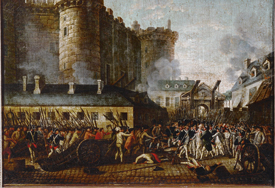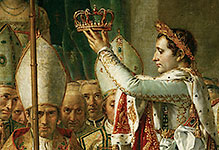
History
History by Periods, War and Peace, Revolutions.

#030302 8
The Taylor-Prism, Neo-Assyrian, from Niniveh,northern Iraq, 691 BCE. This six-si...

#03030229
Assyrian slingers attacking the Judean fortified town of Lachish (battle 701 BC...

#03030235
Statue of Nofret wearing a wig and bead necklace (detail). Painted limestone st...

#03030236
Satue of Pharaoh Mycerinos (2485-2457 BCE, aka Mykerinus, Menkaura). Alabaster s...

#03030239
The Royal Scribe. Painted limestone sculpture; Saqqara, Egypt. Old Kingdom , 5...

#03030240
Bust of a Scribe. Painted limestone sculpture; Saqqara, Egypt. Old Kingdom (5t...

#03030242
Bust of Pharaoh Mentuhotep II. Painted sandstone sculpture from Deir el-Bahari....

#03030243
Head of Pharaoh Kamose from his sarcophagus. Deir el-Bahari, Egypt; end of the...

#03030245
Wooden sculpture of Queen Ahmose Merit-Amon, wife of Amenophis I. From Deir el-B...

#03030246
Pharaoh Amenophis II (1439-1413 BCE). Limestone statue; New Kingdom (18th dynas...

#03030248
Pharaoh Amenophis III (1391-1353 BCE) in chariot wearing a crown with the uraeus...

#03030249
Pharaoh Amenophis III (1391-1353 BCE) in chariot wearing a crown with the uraeus...


